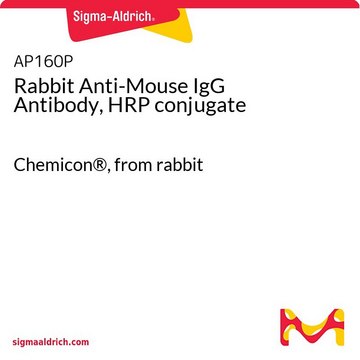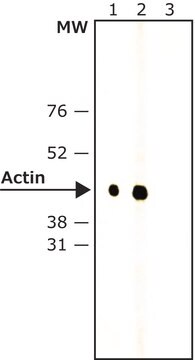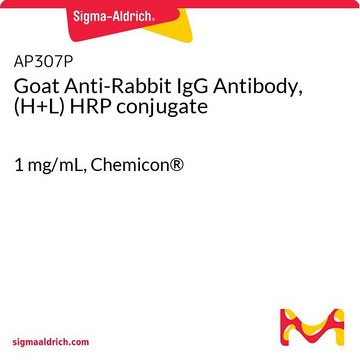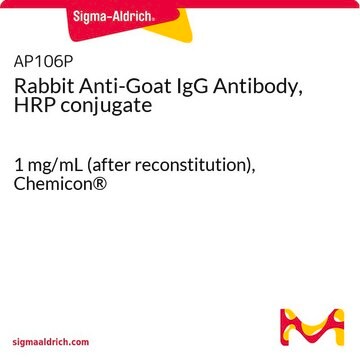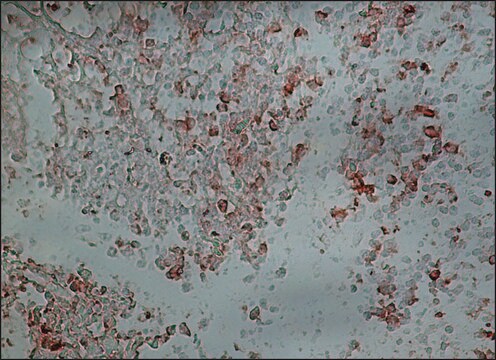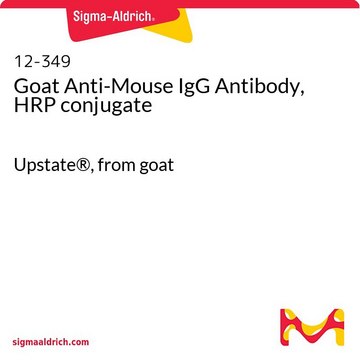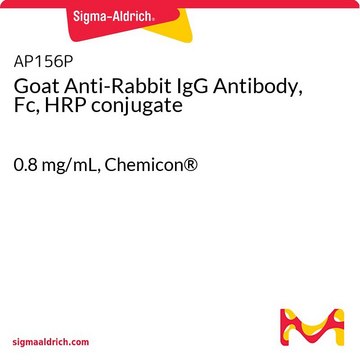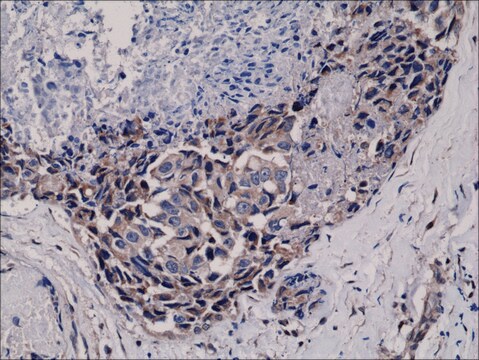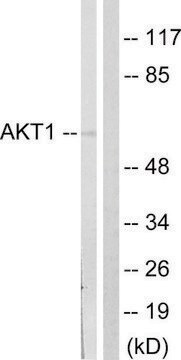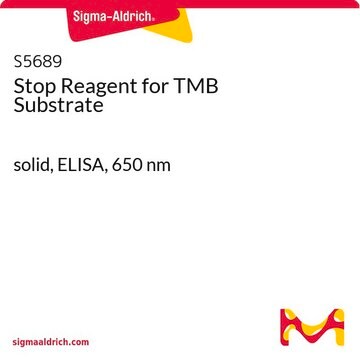AP188P
Mysie przeciwciało anty-Rabbit IgG, koniugat HRP, zaadsorbowany gatunek
0.8 mg/mL, Chemicon®
About This Item
Polecane produkty
pochodzenie biologiczne
mouse
Poziom jakości
białko sprzężone
peroxidase conjugate
forma przeciwciała
F(ab′)2 fragment of affinity isolated antibody
rodzaj przeciwciała
secondary antibodies
klon
polyclonal
reaktywność gatunkowa
rabbit
producent / nazwa handlowa
Chemicon®
stężenie
0.8 mg/mL
metody
ELISA: suitable
western blot: suitable
Warunki transportu
wet ice
docelowa modyfikacja potranslacyjna
unmodified
Zastosowanie
Immunohistochemia: 1:500-1:5,000.
Optymalne rozcieńczenia robocze muszą być określone przez użytkownika końcowego.
Postać fizyczna
REKONSTYTUCJA:
Rozpuścić w sterylnej wodzie destylowanej do objętości wskazanej na etykiecie fiolki. Odwirować produkt, jeśli nie jest całkowicie klarowny po odstawieniu na 1-2 godziny w temperaturze pokojowej.
Informacje prawne
Nie możesz znaleźć właściwego produktu?
Wypróbuj nasz Narzędzie selektora produktów.
Kod klasy składowania
11 - Combustible Solids
Klasa zagrożenia wodnego (WGK)
WGK 3
Certyfikaty analizy (CoA)
Poszukaj Certyfikaty analizy (CoA), wpisując numer partii/serii produktów. Numery serii i partii można znaleźć na etykiecie produktu po słowach „seria” lub „partia”.
Masz już ten produkt?
Dokumenty związane z niedawno zakupionymi produktami zostały zamieszczone w Bibliotece dokumentów.
Klienci oglądali również te produkty
Nasz zespół naukowców ma doświadczenie we wszystkich obszarach badań, w tym w naukach przyrodniczych, materiałoznawstwie, syntezie chemicznej, chromatografii, analityce i wielu innych dziedzinach.
Skontaktuj się z zespołem ds. pomocy technicznej
